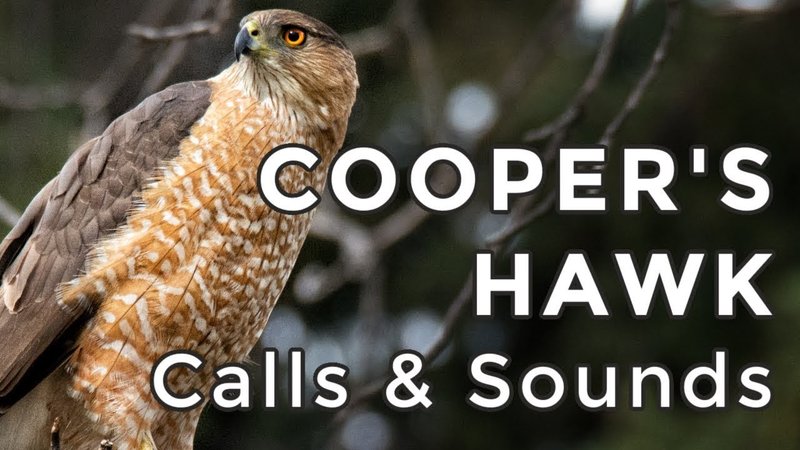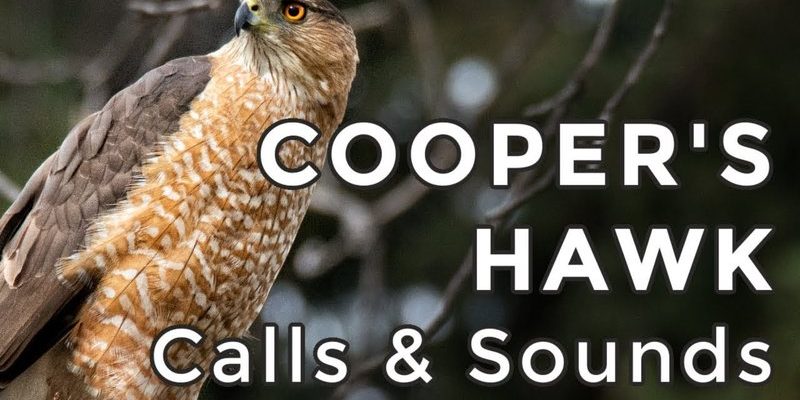
When you hear a Cooper’s hawk calling, it’s almost like they’re sending out a personal message. Whether it’s a mating call or a warning to other birds, the sounds they make play a crucial role in their daily life. So, let’s dive deeper into these vocalizations. We’ll explore what they sound like, what they mean, and why understanding these calls matters.
Understanding Cooper’s Hawk Calls
Cooper’s hawks have a variety of calls they use in different situations. Their vocalizations can range from short, sharp barks to longer, drawn-out calls. Each sound serves a specific purpose. Wouldn’t it be cool if humans had a similar way to communicate our feelings?
Here are the main types of calls you might hear:
- Alarm Calls: These are short and often harsh sounds, used to warn other birds about potential threats.
- Mating Calls: Typically a series of melodious chirps or whistles that attract a mate during the breeding season.
- Nest Calls: Used by adult birds to communicate with their young, often softer to not draw attention.
Understanding these calls can add a new layer to your birdwatching experience. You might start to recognize when a hawk is on the hunt or when they’re merely keeping an eye on their territory.
Alarm Calls: A Warning System
You might be wondering why alarm calls are so critical. When a Cooper’s hawk spots a potential threat, such as a predator or an intruder, they produce harsh, fast-paced calls. These sounds are sharp and quick, almost like an urgent alarm.
The purpose of these alarm calls is to alert other birds, not just Cooper’s hawks. For example, if a hawk sees a person approaching, it might emit a loud call to warn nearby songbirds. These calls can often be mistaken for squawking, but they have a purpose—helping to maintain a safe environment.
Interestingly, other birds also pay attention to these alarms. If you hear a Cooper’s hawk’s alarm call, keep an eye out for other birds reacting. They may scatter or become more vigilant, showing that they understand the message being sent.
Mating Calls: The Love Songs
When it’s time for a Cooper’s hawk to find a mate, they pull out a whole different set of vocalizations. The mating calls are often melodious and can include a series of whistles or chirps. Think of it as their version of a love song.
These calls usually occur in the spring, during the breeding season. The male hawk might perform a display flight, soaring high and calling out to attract a female. If you’re lucky enough to be around during this time, you might witness some fascinating courtship behavior, complete with captivating aerial displays combined with their beautiful calls.
What’s remarkable is how these calls can vary based on the individual hawk. Just like how each person has their own singing style, Cooper’s hawks have unique calls that can be identified by keen listeners.
Nest Calls: Communication with the Young
Once a Cooper’s hawk has made a nest and laid eggs, the vocalizations shift again. Nest calls are softer and often used by adult hawks to communicate with their chicks. These calls are gentle, almost like a whisper, which helps to keep the nest safe from prying eyes.
As the chicks grow, the parents will use these calls to guide them. Young hawks learn to respond to their parents’ vocalizations, which is crucial for their survival. It’s incredible to think that these little ones are learning a language all their own, one that will help them navigate the wild as they mature.
It’s often during this time you might see the parents bringing food to the nest, chirping softly as they hand over their catch. This nurturing behavior is a beautiful reminder of the bond between parent and offspring.
Why Understanding These Vocalizations Matters
You might be asking, “Why should I care about Cooper’s hawk calls?” Well, understanding these vocalizations can enhance your appreciation for wildlife. It’s like learning a new language that opens up a whole new world around you.
For birdwatchers, recognizing these calls can help you locate Cooper’s hawks in the wild more easily. If you hear an alarm call, you know to look closely—you might just spot a hawk perched high in a tree, surveying its surroundings.
Moreover, knowledge of bird calls can contribute to conservation efforts. Every time we take an interest in the natural world, we become advocates for preserving those ecosystems. Knowing the signs of a healthy hawk population can alert us to changes in the environment that may need attention.
Final Thoughts on Listening to Cooper’s Hawks
Listening to Cooper’s hawk vocalizations is an enriching experience. It draws you into their world in a way that few other things can. Next time you’re outdoors, take a moment to tune in. You might just hear the sharp alarm calls warning everyone of a nearby predator or the sweet notes of a love song during mating season.
As you become more attuned to these sounds, you’ll find that there’s a whole conversation happening in the skies above you. Engage with it, enjoy it, and let it fuel your love for nature. Honestly, there’s nothing quite like being part of that incredible symphony of the wild.

